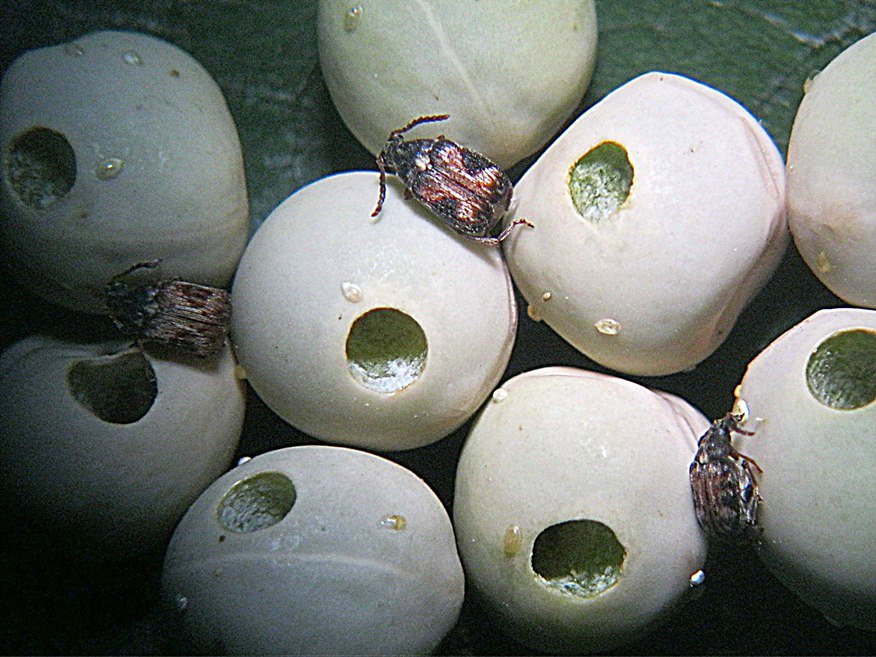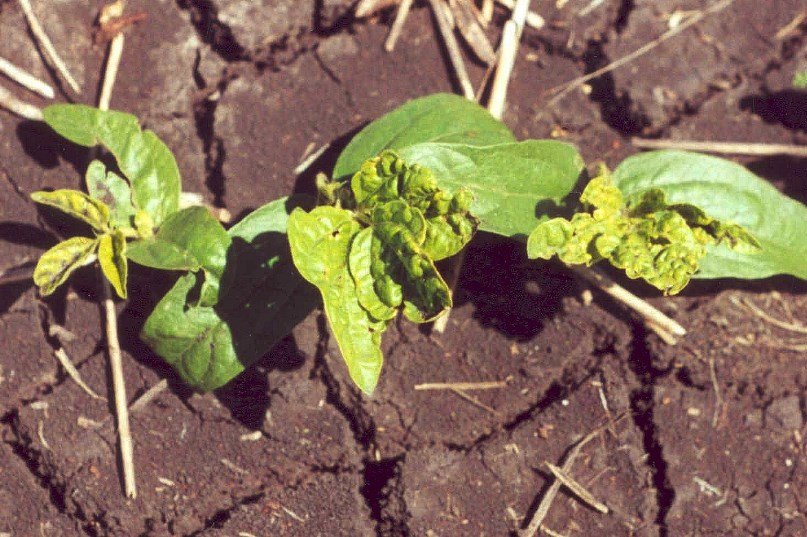There have been two reports recently of cowpea bruchid activity, with these pests infesting pulse crops in the field prior to harvest. The first report concerned the cowpea bruchid (weevil) Callosobruchus maculatus in field peas from Goondiwindi. The bruchids were noticed at intake and continued to breed in an untreated grain sample post-harvest. This clearly indicated they were not pea… Read more »
There have been several reports of seedling thrips in spring mungbean crops in the Goondiwindi region. Seedling thrips (Thrips tabaci) are also known as winter cereal thrips or cotton seedling thrips. The thrips move out of winter cereals when these start to dry off into new green spring growth such as mungbean, navy beans or cotton. Spring planted crops, especially… Read more »
As temperatures start to warm up there are a number of insect pests becoming active and causing crop damage. This post provides an overview of current and potential issues for field crops.
The white-fringed weevil (Naupactus leucoloma) originates from South America and was first reported in NSW in 1932. Although generally associated with warm moist conditions, this pest is now found in many cropping areas throughout Australia and they appear to be increasing their range. Infestations often go unnoticed until crops are planted and once they are established they are difficult to… Read more »
As the warm weather persists, insect activity is remaining high. DAFFQ Entomology has received numerous reports of aphids, and leaf-feeding caterpillars. The aphids have been identified as cowpea aphid and the caterpillars as one of the summer-active armyworm species, Spodoptera exigua (lesser armyworm). The concerns about these are for the potential for crop loss caused by direct feeding damage/defoliation or virus… Read more »
The 2013/14 soybean growing season has been challenging for many growers with very low rainfall and high temperatures until late March. Crop stress was sometimes wrongly attributed to insect pests although a number of crops were infested with more unusual pests such as etiella. The high temperatures also increased the impact of lucerne crown borer in infested crops.
Background: Significant etiella outbreaks have recently been reported in soybeans and mungbeans on the Darling Downs, in the South Burnett (SE Qld) and in the Moree and NorthernRivers regions of NSW. In some soybean crops on the Downs, 100% of plants were infested and 72% of axilliary buds damaged to varying degrees. These outbreaks are similar but more widespread than… Read more »
Large numbers of different spotted larvae have recently been observed in many mungbean crops. The spotted larvae of the bean pod borer remains a significant pest of mungbeans yet the spotted fungus eating ladybird larvae poses no threat to crops. In recent years, significant populations of bean podborer larvae (Maruca vitrata) have been reported in crops as far west as… Read more »
An estimated 4,000 ha of soybeans near Casino in Northern NSW have been affected to varying degrees by soybean stem fly (Melanagromyza sojae) , a pest rarely seen in damaging numbers in Australia. Damage in many Casino crops is confounded by the presence of charcoal rot, a disease which blocks the plant’s vascular (xylem and phloem) tissue and causes similar… Read more »
Etiella (Etiella behrii) larvae have been observed in significant numbers (up to 10 larvae per square metre) in vegetative soybean crops in the Cecil Plains/ Pampas regions of the Darling Downs, and in low numbers (<1/sqm) in a DAFF soybean trial at Kingaroy. These infestations are likely due to the current hot and dry seasonal conditions which historically favour increased… Read more »


